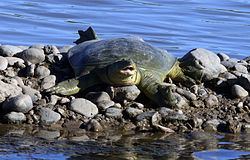Phylum Chordata Rank Species | Higher classification Rafetus Order Turtle | |
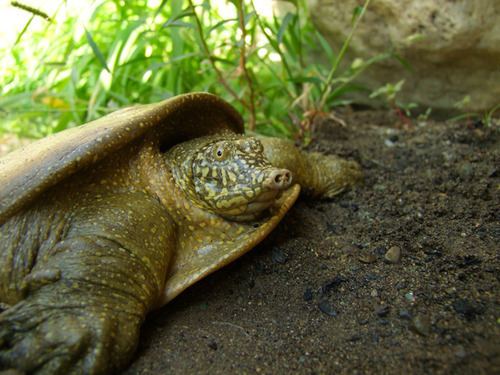 | ||
Similar Turtle, Rafetus, Reptile, Zambezi flapshell t, Trionychidae | ||
Euphrates softshell turtle rafetus euphraticus birecik turkey luuk punt 130505
The Euphrates softshell turtle (Rafetus euphraticus) is a species of softshell turtle in the Trionychidae family. It is found in the basin of the Tigris and Euphrates Rivers in Iraq, Syrian Arab Republic, Turkey, and Khūzestān Province of Iran. The species is threatened by waterway pollution and habitat destruction.
Contents
- Euphrates softshell turtle rafetus euphraticus birecik turkey luuk punt 130505
- History
- Endangered status
- References
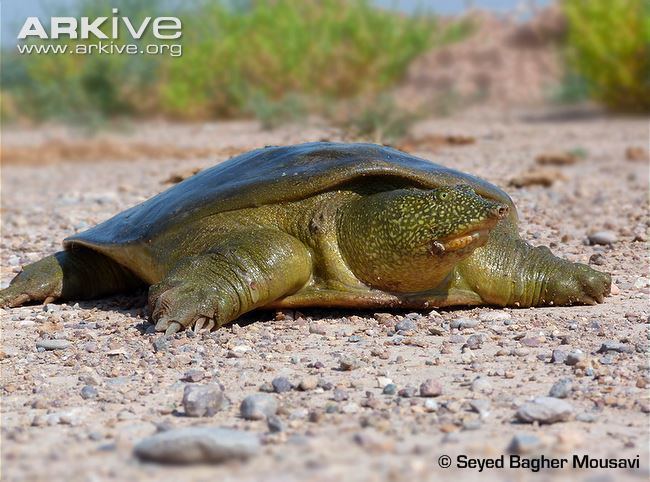
History
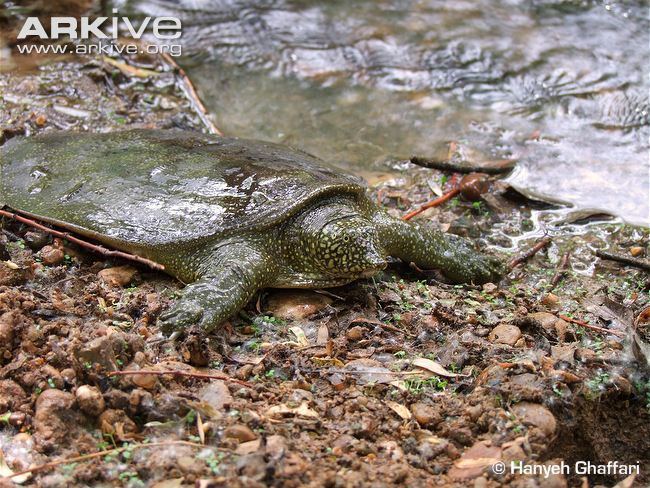
The Euphrates softshell turtle became known to the western science when the French naturalist Guillaume-Antoine Olivier shot a specimen while crossing the Euphrates near Anah in June 1797. The local residents told him that the meat of this animal was not good to eat, but its fat was considered an excellent medication for a variety of skin diseases. Olivier named the species Testudo rafcht, because, as he said "the Arabs called it rafcht".
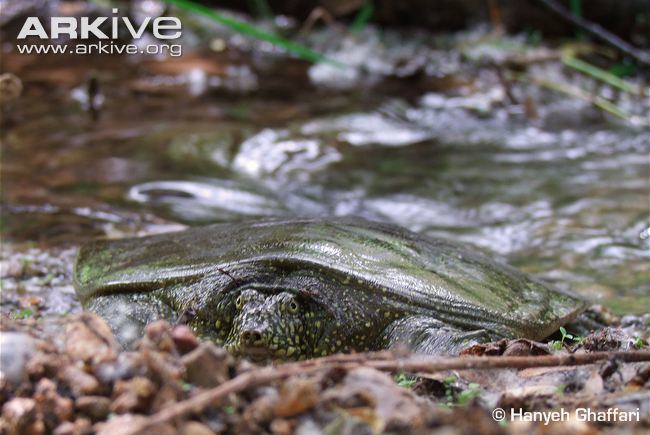
Olivier's book did not explain what the name meant in Arabic; however a number of modern Arabic web pages say that the turtle is known locally as al-rafš(الرفش), which is translated in standard dictionaries as "the spade" or "the shovel", and perhaps refers to the shape of the creature's carapace. Olivier passed the information about the creature to François Marie Daudin, who described it in his Histoire des reptiles (1801).
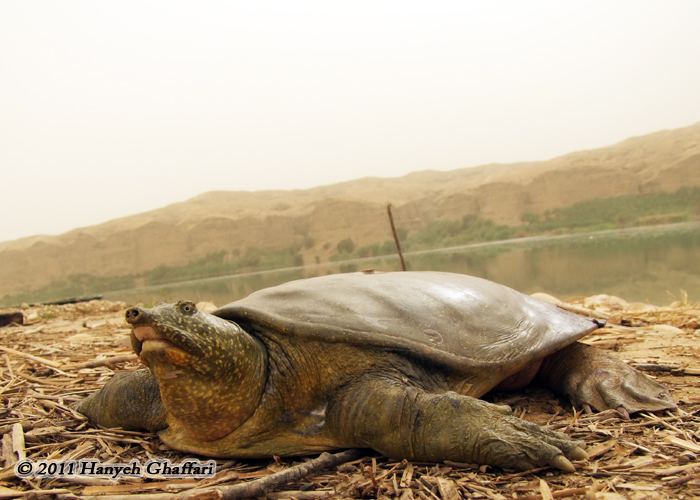
Later naturalists apparently often misread Olivier's rafcht as rafeht. The name Rafetus euphraticus, and the Rafetus genus itself, were proposed by John Edward Gray in 1864, who mentions in his work that the species had been variously known as Trionyx euphraticus, Testudo euphraticus, Trionyx rafeht, Tyrse rafeht, or Testudo rafeht.
Endangered status
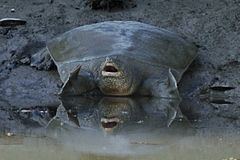
Rafetus euphraticus is an endangered species. According to the field research in Iran's Khuzestan, main threats to this species' survival in that region are habitat destruction, pollution, and killing by fishermen.
